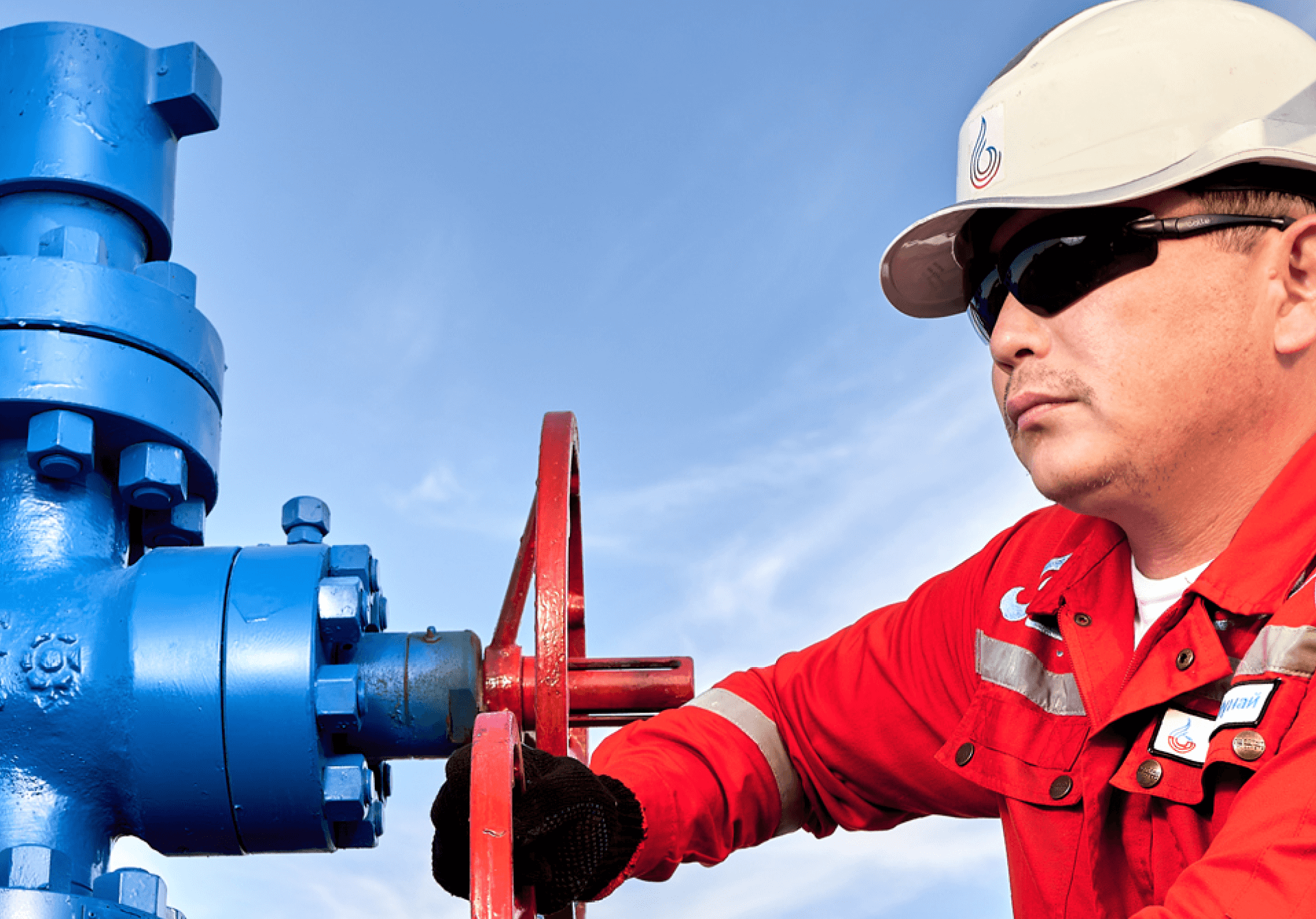Low-Carbon Development Programme

Reducing our carbon footprint is key to KMG’s future sustainability
Today, decarbonisation of industry as part of climate change mitigation has solid positions on global political, investment and trade agenda.
Reducing the carbon footprint is the critical factor in fighting global warming.
The sustainability and long-term horizon of decarbonisation are set forth by the Paris Agreement on climate change, which sets a global goal to hold temperature increase to 1.5 °C by 2100 and achieve a reduction of CO2 emissions of 25% by 2030, 70% by 2050, and 100% by 2070 (full decarbonisation).
Kazakhstan in turn supports international initiatives to step up efforts and enhance ambitions towards achieving the Paris Agreement goals, taking on voluntary commitment to have greenhouse gas emissions reduced by 15% by 2030 from the 1990 level.
In November 2020, President of the Republic of Kazakhstan Kassym-Jomart Tokayev spoke at a climate change conference and announced that Kazakhstan is ready to take action on climate change and achieve carbon neutrality by 2060. To that end, a Doctrine for Carbon Neutrality of Kazakhstan by 2060 was drafted in 2022.
KMG developed a Low-Carbon Development Programme for 2022–2031 as a single low-carbon development agenda that streamlines the Company’s efforts in the realm of carbon footprint reduction.
As part of implementing KMG’s 2022–2031 Low-Carbon Development Programme approved in November 2021, the Company developed and approved an Action Plan for 2022–2031.
The Action Plan includes a number of initiatives aimed at reducing GHG emissions and focused on four areas: energy efficiency, renewable energy, methane monitoring, and organisational measures. Implementation of these initiatives will help achieve the goal of reducing KMG’s GHG emissions by 15% by 2031 set out in the Company’s Low-Carbon Development Programme.
As part of the Action Plan implementation, a GHG Emission Monitoring and Reporting Methodology and the Internal Carbon Pricing (ICP) Programme have been developed.
The methodology defines key approaches to the recording and monitoring of GHG emissions across KMG subsidiaries and associates and provides a unified methodological basis for measuring GHG emissions across KMG subsidiaries and associates. The methodology was developed in accordance with the Environmental Code of the Republic of Kazakhstan, as well as international standards for calculating GHG emissions applicable to ESG reporting.
The main goal of developing the ICP Programme is to assess and minimise the Company’s financial risks associated with the tightening of carbon regulations, as well as to reallocate some investments from carbon-intensive projects to low-carbon ones. The introduction of internal carbon pricing is seen as a strategic tool to manage the risks associated with the impact of climate-related regulations on the Company’s operations and to create additional opportunities for upgrading production capacities and achieving KMG’s GHG emission reduction targets.
The ICP Programme describes key areas for ICP mechanisms, approaches to their implementation, relevant global experience, as well as general proposals on the ICP use across KMG with a view to shaping further development of the Company’s GHG emissions management system. The detailed development of mechanisms and their implementation in KMG’s internal regulations are scheduled for 2023.
In 2022, KMG and Chevron (NYSE: CVX), through its subsidiary Chevron Munaigas Inc., announced a memorandum of understanding to explore potential lower carbon business opportunities in Kazakhstan.
KMG and Chevron plan to explore the potential for joint projects in carbon capture, utilisation and storage (CCUS), methane leakage management and energy efficiency.
The cooperation between KMG and Chevron is part of both companies’ efforts to support Kazakhstan’s commitment to achieving carbon neutrality by 2060.
In June 2022, KMG and the EBRD signed a memorandum of understanding regarding strategic cooperation on decarbonisation.
The aim of the cooperation is to support KMG in reducing its carbon footprint by implementing its Low-Carbon Development Programme and to enhance its effectiveness.
The parties will focus on enhancing KMG’s reporting capabilities in line with the TCFD recommendations and on exploring opportunities for financing projects to reduce our carbon footprint, including those in areas of energy efficiency, renewable energy, low-carbon hydrogen generation and the use of carbon dioxide capture and storage technologies.
Target indicators
In 2022, 49 low-carbon development initiatives were implemented as planned, with annual fuel and energy savings totalling 1.504 mln GJ, including 33,448 thous. kWh in electricity, 1,531 Gcal in heat, 25,292 tonnes in boiler and heating fuel, and 7,570 thous. m3 of natural gas. This translates into a 106,965 thous. reduction in CO2 emissions.
Intention to embed TCFD reporting
- KMG has formally announced its intention to embed reporting consistent with the TCFD principles, with a focus on assessing climate-related risks and their financial impact on the Company’s operations.
- To prepare the initial disclosure, KMG has signed a memorandum of understanding with the EBRD for strategic cooperation on decarbonisation, whereby the EBRD will support KMG in drafting its first TCFD report.
